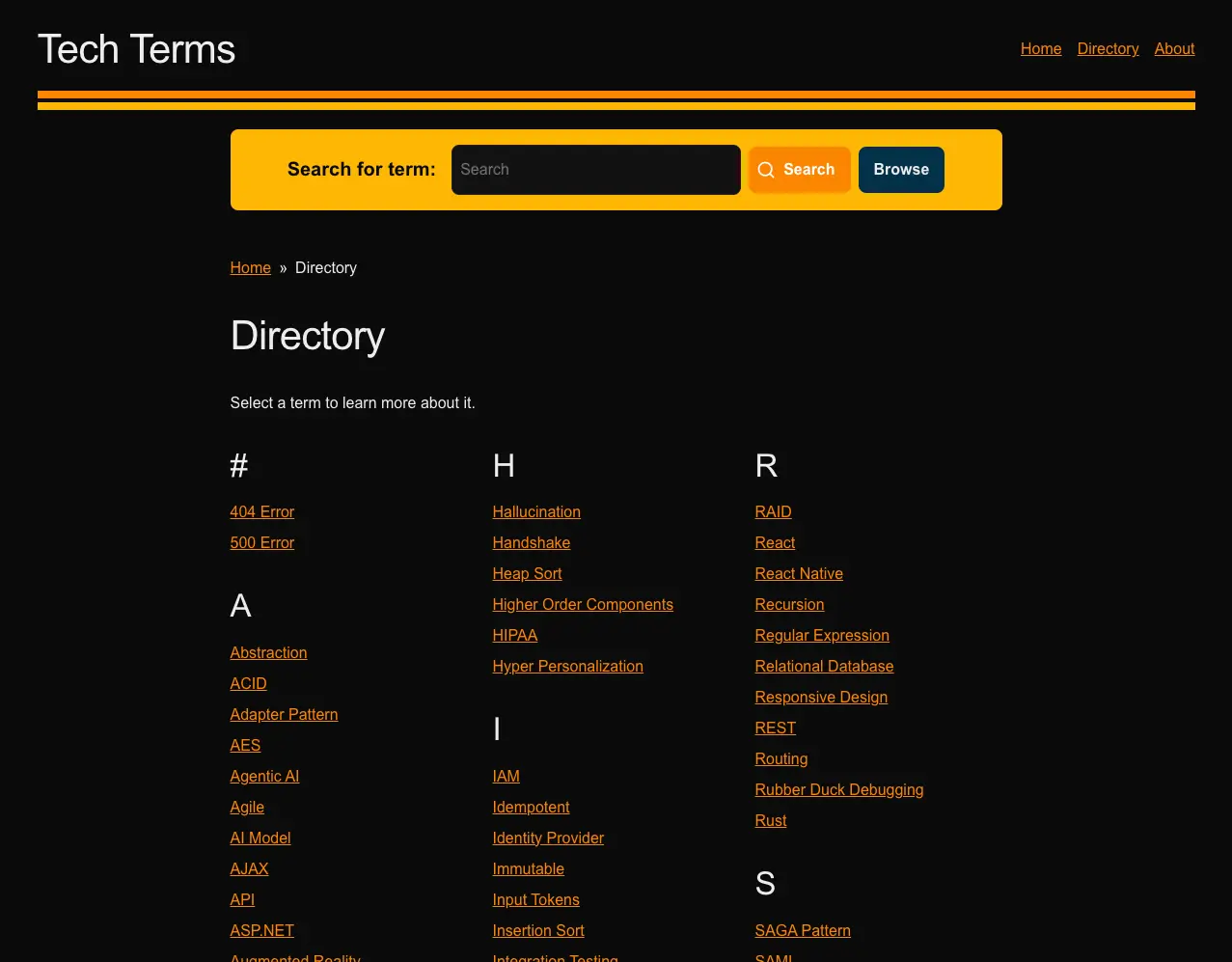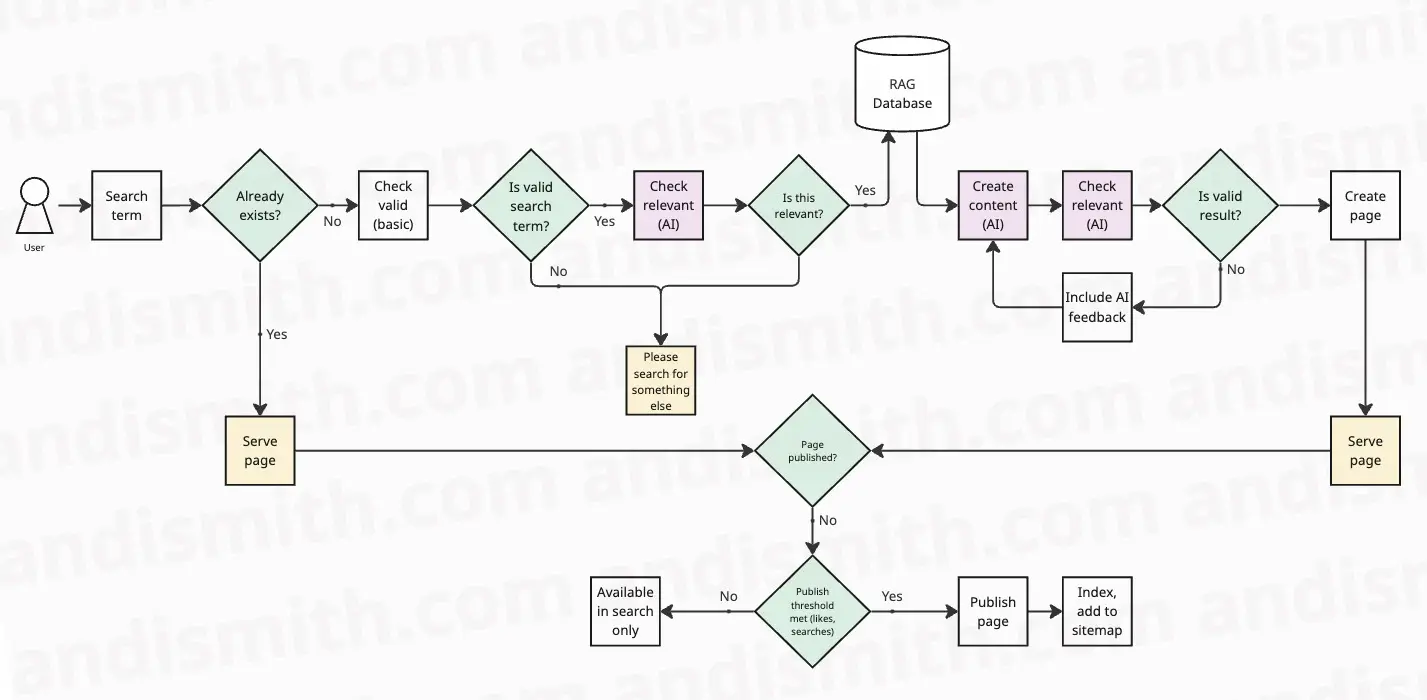Generative AI to boost Content Workflows and SEO
Recently I have been experimenting with how AI can help improve content workflows and SEO through the use of real-time content generation in a automated content workflow system.
The real world applications for this would include knowledgebases; help and support centres and SaaS product search bars. Companies can create knowledgebases of their systems and products without requiring mass manual creation of content - they simply handle curation.
How it works
The system works as follows:
- The user visits the site or product on a subject matter they are interested in
- There is a prominent search bar encouraging the user to find what they are looking for which they use to search for content
- If the content exists, it is directly served to the user
- If the content does not exist, then we use AI coupled with Retrieval Augmented Generation to generate the content on the fly
- This content is immediately presented to the user who searched for it.
- The user can mark the content as useful if it is appropriate - which will then trigger it to be published and added to the site and site map for SEO.
With this approach, we no longer turn a user away when they don't find something relevant - we instead offer a way for them to find
Checks and balance
Of course, with any content being generated automatically we need checks and moderation. There's two areas we need to be careful of here:
- User input - Is this input a valid input? We don't just need to check for bad language - we also need to check it's relevant to the subject matter of our website (and not sending users to our competitors).
- AI output - Is the output from the AI correct and relevant, or has it been hallucinating?
We can use a set of AI and non-AI checks to ensure our inputs and outputs are correct.
Input
Before anything happens, we check to see if the content already exists in our system using the regular search techniques.
If the content doesn't exist, then we do some rundementary checks - is the query of a minimum viable length (or not overly wordy) and does it pass a bad words filter.
Next a cheaper AI model (in my case Claude Haiku) handles our initial screening - verifying whether the search term is relevant to our subject matter.
Once we are happy, we can send it through to our more expensive AI model (Claude Sonnect) together with any relevant content from our RAG (Retrieval Augmented Generation) database to create our new content.
Output
For the output, we specify a JSON structure we would like the AI to return our content, and then we run a secondary check with another AI prompt to ensure that this secondary model agrees the content is relevant to our subject matter.
This content is then surfaced back to the user to help with their query, but it remains unpublished on the site.
A secondary threshold (did the user find it useful, is it a common search term) determines if the content becomes a published article on the site.
Putting it all together
The diagram above illustrates how it all fits together and how AI components (marked in purple) are integrated with traditional content management processes (in white) and decision points (in green) to create a comprehensive content workflow system.
A working prototype
I have built a working prototype of this system as a directory for technical terms.
 A knowledgebase for technical terms
A knowledgebase for technical terms
The prototype behaves as follows:
- it is connected to a content database filled with technical terms
- if the user searches and a term isn't found, then the content is generated and served to the user
- an alert is triggered to notify me for review and if I approve it, the content will be published on the site
If you'd like to explore more about how this system works and how we could partner in developing this or similar systems, please contact me on LinkedIn.
Related Blog Posts
5 Tools to Help with Vibe Coding Design
So you've dipped your toes in to vibe coding and you've coded a basic app, but it's lacking some flair. Here's some useful online tools that can help you make your design really vibe!
AI to Solve Actual Product Problems
AI is improving by leaps and bounds week after week. Everyone’s trying to bolt AI onto their product. But AI only adds value when it’s solving the right problem.
Getting the best out of Cursor AI
AI is rapidly changing the way how we code. Cursor is one particular tool which has changed the game. Here's some tips on how to get the best out of it.

